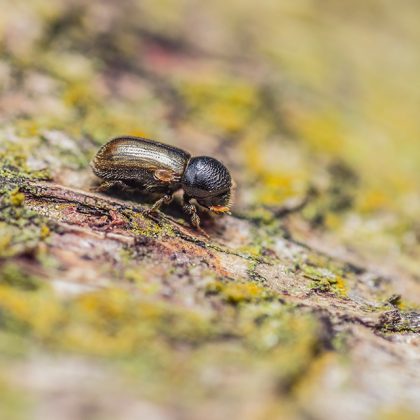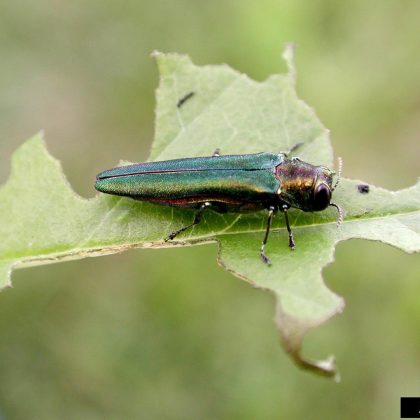What’s killing the green menace?
“The late Peter de Groot, a highly respected forest entomologist, likened the emerald ash borer Agrilus planipennis to the green wrestling persona of the character Bubbles on the TV comedy series the Trailer Park Boys. Both are decked out in wrestling regalia and come “from parts unknown”.
My recent publication entitled “What’s killing the green menace: mortality factors affecting the emerald ash borer (Coleoptera: Buprestidae) in North America” (pages 263-276) in the recent special issue of The Canadian Entomologist. The special issue is more aptly named “The science of the emerald ash borer: where are we after 10 years of research?” edited by guest editors Chris J.K. MacQuarrie and K.L. Ryall. The special issue was a by-product of a highly successful Emerald Ash Borer Workshop organized by the guest editors and T.A. Scarr held during the Joint Annual Meeting of the Entomological Society of Canada and the Entomological Society of Ontario in Guelph, Ontario, Canada in the fall of 2013. The meeting brought together many of the key researchers, several who have spent more than the last 10 years involved in emerald ash borer research in North America, to review their research specialties. The presentations from this workshop formed the basis for the nine review and original articles in this issue.
When the emerald ash borer was first detected in North America in 2002, very little was known about its biology except for a few brief passages in pest management textbooks in the Chinese literature. The realisation of the potential catastrophic impact that this already invasive species would wreak on North American forests resulted in the spate of research activities. The articles in this special issue are a synopsis of much of this research effort. The scope of the articles in the special issue spans the gamut from detection tools and biological controls to economics of management and everything in between. It has become a pet peeve of mine to hear the comment that emerald ash borer has no natural enemies in North America and North American ash trees have no resistance to this pest. As I indicate in my review, emerald ash borer has adopted many natural enemies (predators, parasitoids and pathogens) on this continent; they are just not able to regulate the populations of this invading species. Simultaneously, North American ash trees do have some inherent resistance to emerald ash borer. Small larvae are particularly susceptible during the early stage of the invasion. Unfortunately, this resistance soon diminishes as the populations of the pest increase. The work of the scientific community to manage emerald ash borer has just begun and much more needs to be done. Hopefully, this volume of work will form the solid foundation of research efforts to come.
Read the EAB Special Issue in full for free here until the end of 2015.






